Are you wondering how to visit Jungraujoch Top of Europe? If you’re yearning for an adventure that combines breathtaking landscapes and alpine beauty, look no further than Jungfraujoch Top of Europe, one of the top excursions in Switzerland. Nestled in the heart of the Swiss Alps, this mesmerizing destination is a dream come true for travelers seeking an unforgettable experience. In this guide, I’ll provide you with all the information you need to plan your visit, from what Jungfraujoch is to how to get there and what to do once you arrive.
What is Jungfraujoch Top of Europe?
Jungfraujoch, often referred to as the “Top of Europe,” is a high-altitude saddle in the Bernese Alps, Switzerland. This natural wonder boasts an elevation of 3,454 meters (11,332 feet) above sea level, making it one of the most elevated accessible points in Europe. There, glaciers glisten, and snow-capped peaks surround you in every direction.
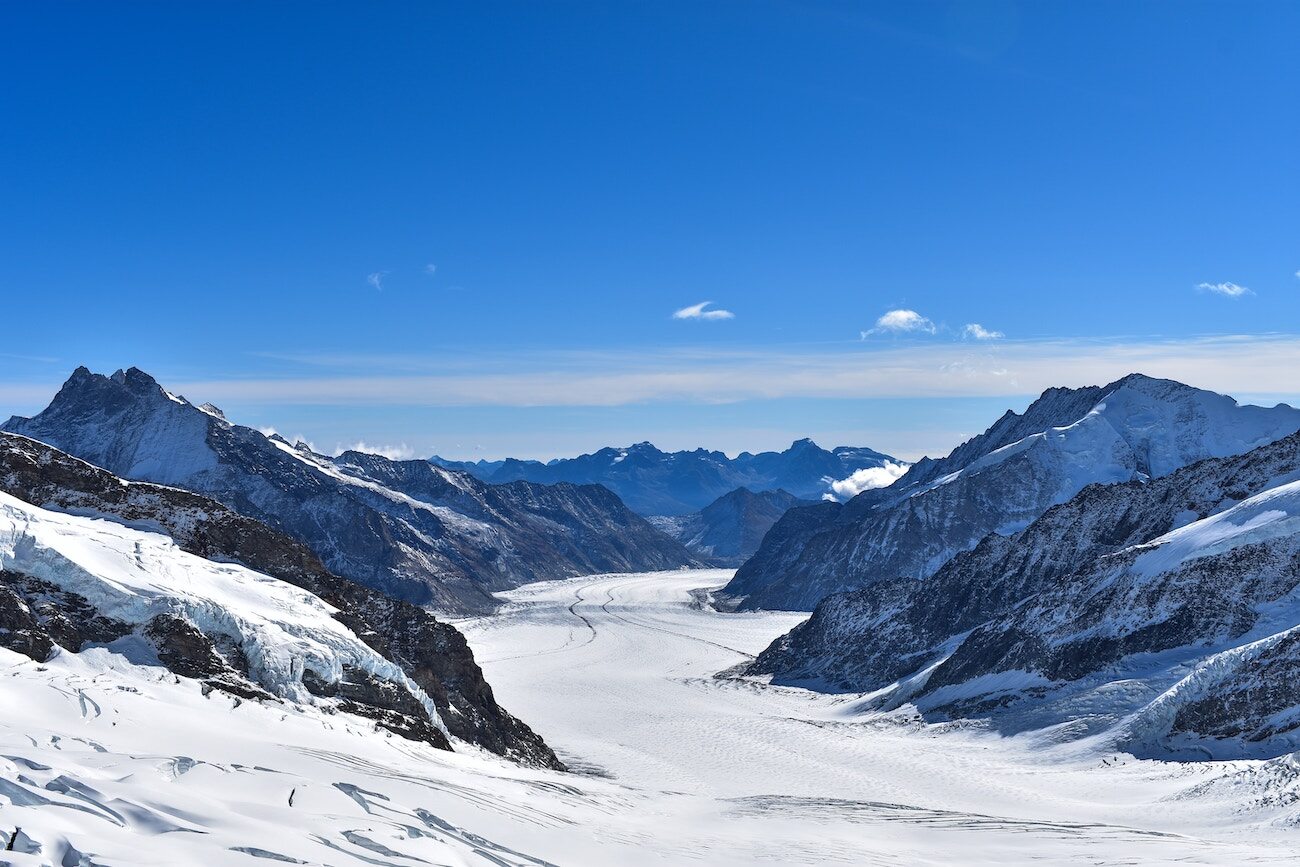
Due to its unique beauty and easy access, thanks to the cog train, Jungfraujoch is one of the most popular destinations in Switzerland, visited by people from all over the world.
Where is Jungfraujoch?
Jungfraujoch is located in the Bernese Oberland region of Switzerland, near the picturesque towns of Mürren, Wengen, Grindelwald, and Lauterbrunnen. These towns, plus Interlaken, are typically where people start their journey. So, if you are wondering how to visit Jungfraujoch, take note of the places closest to your destination. If you’re short on time, you can also take a guided excursion to Jungfraujoch from Lucerne and Zurich.
This is one of the most beautiful alpine areas in Switzerland, dominated by the legendary Jungfrau, Eiger, and Mönch peaks. Furthermore, the Bernese Oberland is home to some of Switzerland’s most beautiful lakes, like Lake Thun and Lake Spiez, and delightful alpine ponds.
Best Time to Visit Jungfraujoch Top of Europe
The best time to experience Jungfraujoch is during the summer, from June to September, when the weather is milder. Winter visits are also possible, offering a different charm with snow-covered landscapes and a quieter atmosphere.
However, remember that even in summertime, the weather at high altitudes can change suddenly, shifting from sunny and warm to windy, foggy, and even snowy.
What to wear when visiting Jungfraujoch?
Although this may seem trivial, it actually isn’t. An excursion to Jungfraujoch should not be underestimated if you want to get the best from it. That’s why you need a proper outfit, even in summer. There are, indeed, two factors to consider. First of all, it’s the elevation gain. If you get from Interlaken to Jungfraujoch, you’ll experience a significant difference in altitude, from 566 m (1,857 ft) above sea level to 3,463 m (11,362 ft). Even if it’s warm at departure, the temperature will be much lower once you get to the top. Furthermore, weather conditions at high altitudes are prone to sudden changes and temperatures rapidly plummeting.
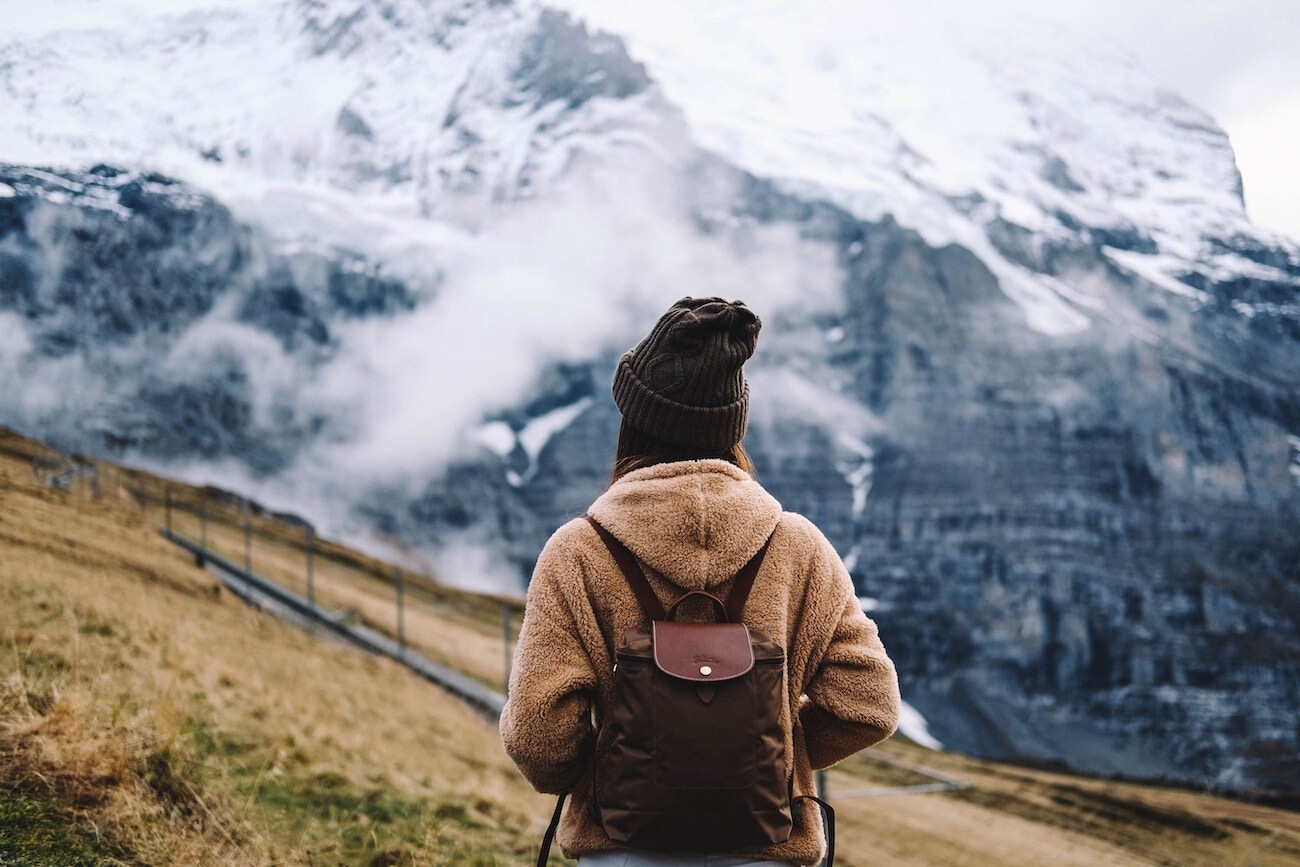
You should wear multiple layers that you can easily add or remove. And this is especially worthwhile in summer. Here’s what to include in your wardrobe:
- Warm Layers: Dress in layers to stay warm. Essentials include a thermal base layer, a fleece jacket (better full-zip), and a waterproof waterproof winter jacket are essential.
- Comfortable Footwear: Wear sturdy, waterproof boots suitable for walking on snow.
- Accessories: Don’t forget items like a warm hat, a scarf, waterproof gloves, and a pair of extra-warm socks. Also, to protect yourself from the intense Alpine sun, remember to pack high-UV protection sunglasses, high-SPF sunscreen, and lip balm.
Beware of the altitude when visiting Jungfraujoch Top of Europe
Remember that some people might be subject to high altitude sickness (in this case, the best thing to do is to go back to a lower altitude).
How to Get to Jungfraujoch: Top of Europe
The only way to get to Jungfraujoch is by train (several trains, actually) or by train plus gondola. It’s a long journey, so you should plan an entire day, but you’ll be rewarded with breathtaking views and idyllic landscapes.
There are several travel routes, depending on where you’re starting your trip from.
Jungfraujoch cost
The Jungfraujoch tickets are expensive—indeed, very expensive. Here is a summary of the prices for return tickets for the main routes and travel time.
Interlaken to Jungfraujoch
Interlaken Ost-Grindelwald-Eigergletscher-Jungfraujoch (train, cable car, train): 1h36min
Interlaken Ost-Lauterbrunnen-Kleine Scheidegg-Eigergletscher-Jungfraujoch (all by train): 2h6min
Price for return ticket (one-way is half price)
Grindelwald to Jungfraujoch
Grindelwald-Eigergletscher-Jungfraujoch (train, cable car, train): 1h23min
Grindelwald- Kleine Scheidegg-Eigergletscher-Jungfraujoch (all by train): 1h26min
Price for return ticket (one-way is half price)
Wengen to Jungfraujoch
Wengen-Kleine Scheidegg-Eigergletscher-Jungfraujoch (all by train): 1h25min
Price for return ticket (one-way is half price)
Is Jungfraujoch worth it?
If you’re looking for scenic train rides in Switzerland and jaw-dropping views of the glaciers, you definitely must add the Jungfraujoch tour to your itinerary. Jungfraujoch Top of Europe is the highest train station in Europe, and it overlooks the Aletsch glacier, the longest in the Alps. Up there, you’ll be rewarded with one of the most breathtaking mountain sceneries in the world.
However, since the tour is costly, wondering if the excursion to Jungfraujoch is worth it is legitimate. If the weather is good, Jungfraujoch Top of Europe makes for an unforgettable experience. Expect to be surrounded by a lot of people, though. Although pricey, Jungfraujoch is one of the most popular attractions in Switzerland. Furthermore, the majority of organized tours of Switzerland include the ride to the Jungfraujoch in their itinerary.
As I mentioned, the weather conditions play a relevant role in the experience. When I visited Jungfraujoch, I was blessed for a good part of the day with a deep blue, cloudless sky, and relatively warm temperature. But that is not always the case. In the case of terrible weather, I wouldn’t recommend a trip to Jungfraujoch unless you want to cross a bucket list or crave to discover the glaciers, even though the colors won’t be at their best.
Aside from the crowds, Jungfraujoch’s downside is its accessibility. With its shops and activities, it feels a bit like a theme park. Still, the surrounding scenery was so awe-inspiring that I soon forgot the people around me and got lost in the perfect beauty of the glaciers and the majesty of the Alps. It really is up to you what you want to make of the Jungfraujoch excursion.
Riding the train to Jungfraujoch Top of Europe
The little train climbed slowly through a beautiful landscape, approaching the glaciers and its destination: the Jungfraujoch. At 3,454 meters (11,332 ft), Jungfraujoch Top of Europe is the highest train station in Europe, and the journey is one of the most scenic train rides in the Alps. The moment I boarded the train, I felt blessed. The sky was a cloudless, perfect blue, and I knew I was up for a memorable journey.
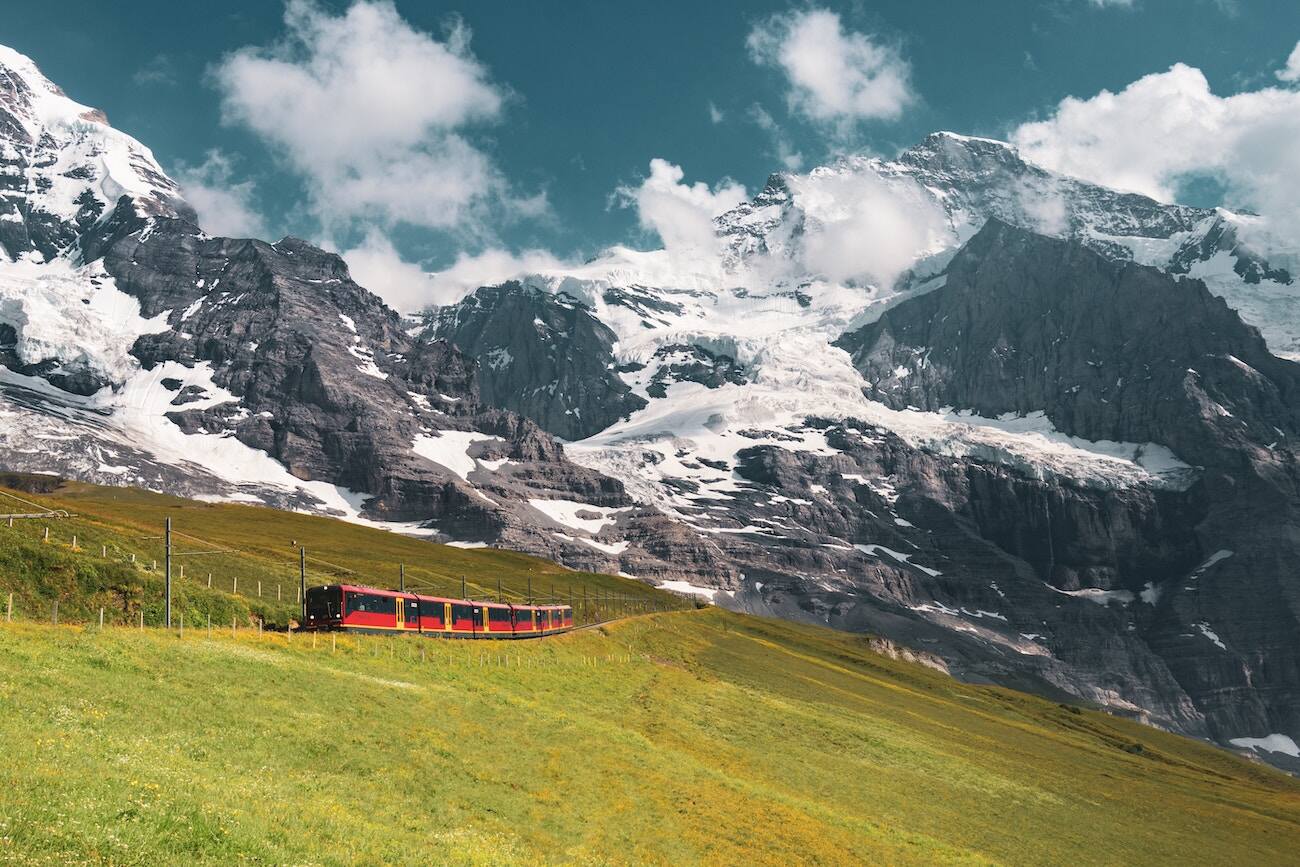
I love nature and landscapes and have developed a passion for deserts and glaciers. That’s what led my steps to Patagonia, where I visited the famous Perito Moreno and the lesser-known Upsala and Spegazzini glaciers. In Europe, I chased glaciers in the Alps several times, from unique – but very touristy places – like the Gornergrat in Zermatt, to views which you can only get hiking up, better when off-season.
Jaw-dropping views of the glaciers from the Sphinx Observatory
Once the train reached the Jungfraujoch station, I climbed down and headed directly to the observatory. I was so lucky with the weather that I didn’t want to take any risk it might change. I know how suddenly clouds can sweep the sky in the mountains, one of the reasons I always pack a few essential items, even if only for a day hike.
From the Sphinx Observation’s deck, perched up a steep rock and reachable with an elevator, the surrounding scenery is breathtaking. All around, snow and rocks, ice delicately shaded in light blue, and the shapes of the crevasses. A little further, I marvel at the winding moraine of the Aletsch glacier, the longest glacier in the Alps. My eyes wandered through this white wonderland, taking in as many details as possible. I couldn’t help thinking how privileged I was to enjoy jaw-dropping views of the Alps.
My eyes wandered through this white wonderland, taking in as many details as possible. I couldn’t help thinking how privileged I was to enjoy jaw-dropping views of the Alps. No wonder the Jungfrau-Aletsch-Bietschhorn region was inscribed in the UNESCO World Heritage List, and people from all over the world come to admire this stunning alpine scenery.
Read also – Hiking Along the Wonderful Aletsch Glacier
A scenic lunch at the Crystal restaurant
After spending a long time on the Sphinx Observation deck, I headed back for one of the most scenic lunches ever.
The scenery from the Crystal restaurant, whose wide window panels overlook the Aletsch glacier and some of the most beautiful peaks of the Bernese Oberland, is breathtaking. The food was delicious, but my eyes were glued to the white wonderland much more than focused on my plate.
Read also – Les Diablerets: An Easy Glacier Walk
Hiking from Eigergletscher to Kleine Scheidegg
I quickly visited the Ice Palace and boarded the train riding down. I was keen to have at least a short hike amid this unique alpine scenery and thus followed the trail from Eigergletscher to Kleine Scheidegg. It’s an easy hike of about 45 minutes with a lovely view of the valley and the Eiger north wall.
At Kleine Scheidegg, I rode the train back to Interlaken, this time via Grindelwald. I traveled in the morning along the Lauterbrunnen-Wengen route, and, that way, I was able to complete the circle circuit with the Jungfraubahn.
Even if you don’t feel like hiking, the restaurant at Eigergletscher (one of the Jungfrau train stops) is well worth taking a break. You can savor a hot drink and one of the delicious homemade cakes on the terrace, right below the glacier. From there, the ice cascade is even closer, and the view is dramatic.
What makes the Jungfraujoch tour special?
This superb region is accessible all year long thanks to a visionary man, the Swiss entrepreneur Adolf Guyer-Zeller.
Back in 1893, during a walk in Murren, a village in the Bernese Oberland, Adolf Guyer-Zeller had the idea of building a railway up to the Jungfrau. The rack railway, 9.3 km (5.8 mi) of which 7.2 km through a tunnel dug into the mountains Eiger and Mönch for a difference in height close to 1,400 meters (0.86 mi), was completed in 1912. As a result, the Jungfraujoch became the highest train station in Europe, owing to it the nickname “Top of Europe.” Over time, it became one of the must-see attractions in Switzerland and, as such, one of the most touristy spots.
Along the way, the train makes two stops in the tunnel where passengers can get off and admire the stunning views of the mountains and glaciers through large panoramic windows. It’s only a very short stay but a great foretaste of what will come once you reach Jungfraujoch.
Remember that you’ll reach a high elevation (3,454 meters – 11,332 ft) and that the weather conditions in the mountains can change abruptly. No matter if the sun shines when you start your journey. Get ready with appropriate clothing: fleece, wind and waterproof jacket, waterproof shoes, gloves, and hat. It’s no fun if you’re freezing, and you don’t want to spoil your experience.
Best time to visit the Jungfraujoch
The answer is easy: Summer.
However, it’s worth taking the Jungfraujoch tour at any season, including Winter. The weather has become increasingly unpredictable, and there’s no guarantee of sunshine, even in July and August.
Consequently, the real factor to consider is the temperature, which can quickly drop below 0°C (32° F). Just be prepared with enough warm layers to face a bright, crisp winter day, which could also provide excellent visibility.
How to visit Jungfraujoch Top of Europe
The only access is by train, and since the ride from Interlaken to Jungfraujoch (your most likely starting point) takes 2.5 hours, you have to consider a full-day trip. Other access points include Lauterbrunnen and Grindelwald (1.5 hours), and Wengen (1 hour).
It’s easy to travel up to the Jungfraujoch on your own. However, since it’s one of the most popular day trips in Switzerland, I recommend you buy your train ticket at least one day in advance. This is a must especially in high season. Also, don’t forget to book a seat, since the train is often crowded.
Another option is to take an organized tour, choosing between a day trip to Jungfraujoch from Interlaken, Lucerne, or from Zurich.
In summary, the Jungfraujoch tour is more than just a checkmark on a Switzerland must-do list. To me, it was a fantastic day and a memorable experience in one of my favorite landscapes: the glaciers.
Have you ever experienced the magic of the glaciers?
Practical information:
How to get to Jungfraujoch Top of Europe
The Jungfrau Bahn connects the Jungfraujoch with Interlaken, Wengen, Grindelwald. Since it’s such a popular excursion, I strongly recommend buying your ticket at least one day in advance. Furthermore, I advise you to book a seat, especially in the high season. You can get your ticket here.
Where to stay in the Jungfrau region
The closest alpine towns are Interlaken, Grindelwald, and Wengen.
Interlaken
- Located in a beautiful traditional wooden chat of the 16th century, Hotel Hirschen features rooms with a warm alpine style, a terrace, and a garden.
- Centrally located, Hotel Beausite features a terrace, a large garden, and offers beautiful views of the mountains.
Grindelwald
- The Eiger Selfness Hotel features modern decor and a wellness center. It offers free admission to the nearby swimming pool and ice skating rink.
- Alpenhof is a family-run hotel boasting a warm, alpine atmosphere. The hotel is centrally located, and the rooms have either a balcony or a terrace.
Wengen
- It’s hard not to love the Belvedere Hotel and its tasteful decor. Furthermore, with its elevated position, the Belvedere offers magnificent views of the mountains.
- If you fancy staying at the oldest hotel in Wengen, look at the charming Alpenrose. Refurbished with a beautiful alpine-style decor, Hotel Alpenrose has fantastic views of the mountains and the valley.
Altitude and weather
Remember that some people might be subject to high altitude sickness (in this case, the best thing to do is to go back to a lower altitude). Also, the weather in the mountains is prone to sudden changes. Don’t forget to wear proper shoes and to bring with you warm clothes, even on a hot and sunny day.
Note: This amazing journey was made possible thanks to the kind invitation by the Jungfrau Mountain Railways to discover a truly magical region. As always, opinions are mine and mine only.
This article contains affiliate links to carefully selected products and services. This means that if you make any purchase, I get a small commission at no extra cost for you.
Pin it if you like it!


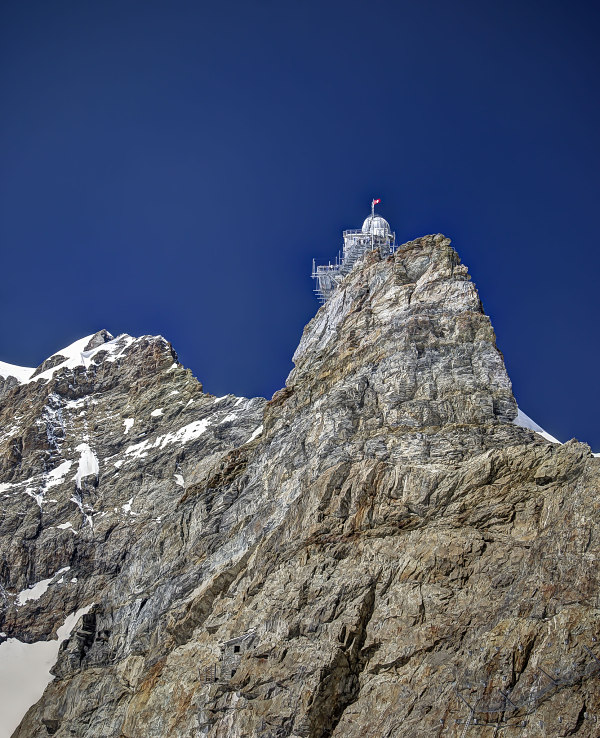
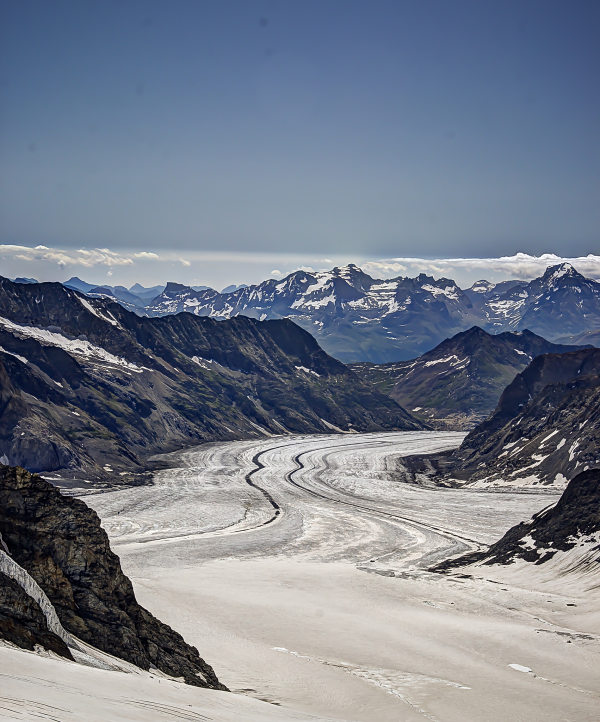
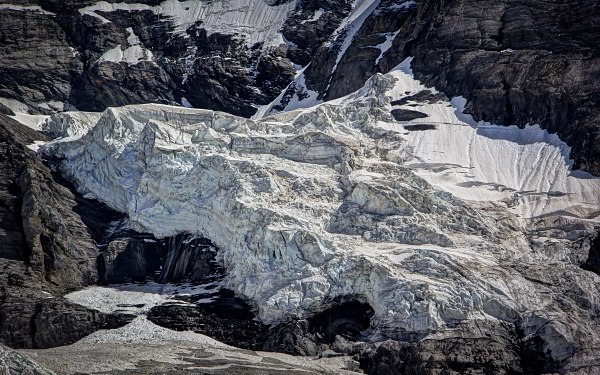
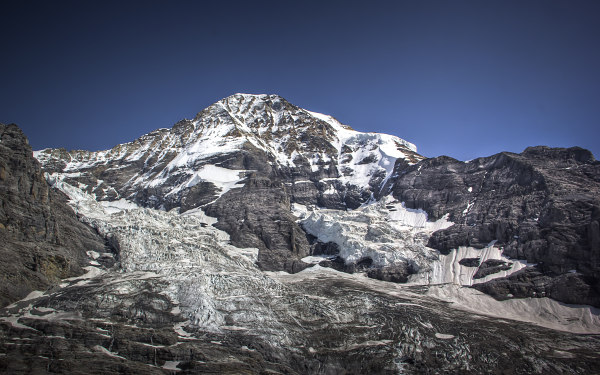
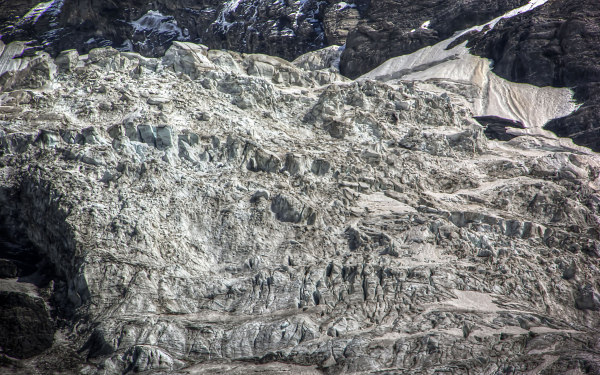
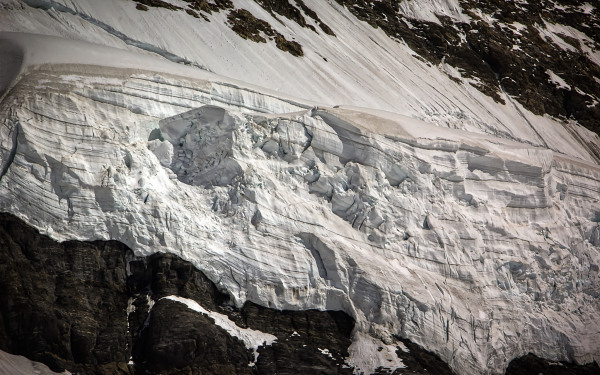
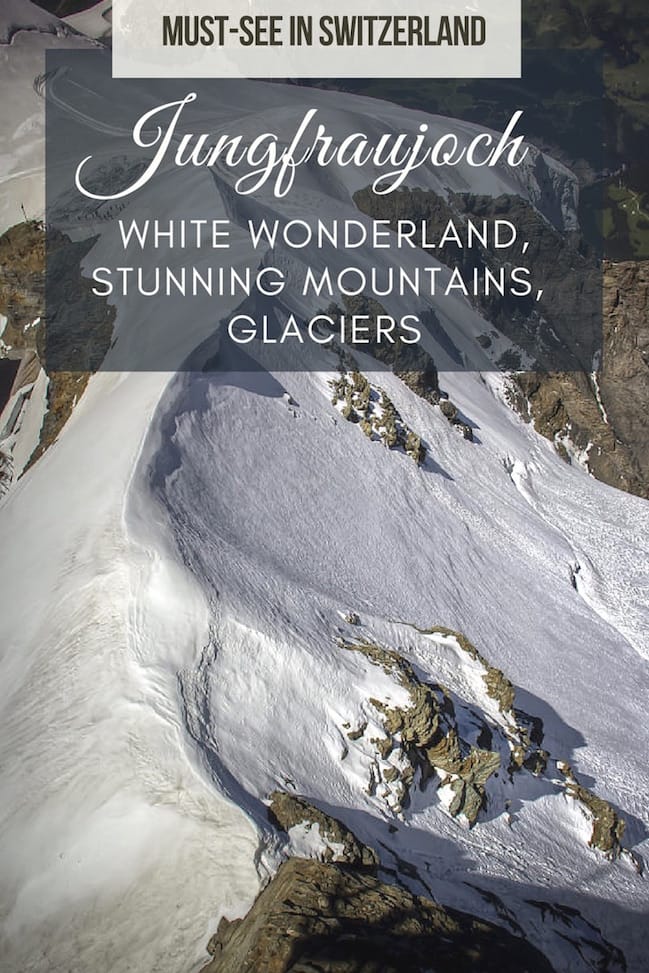
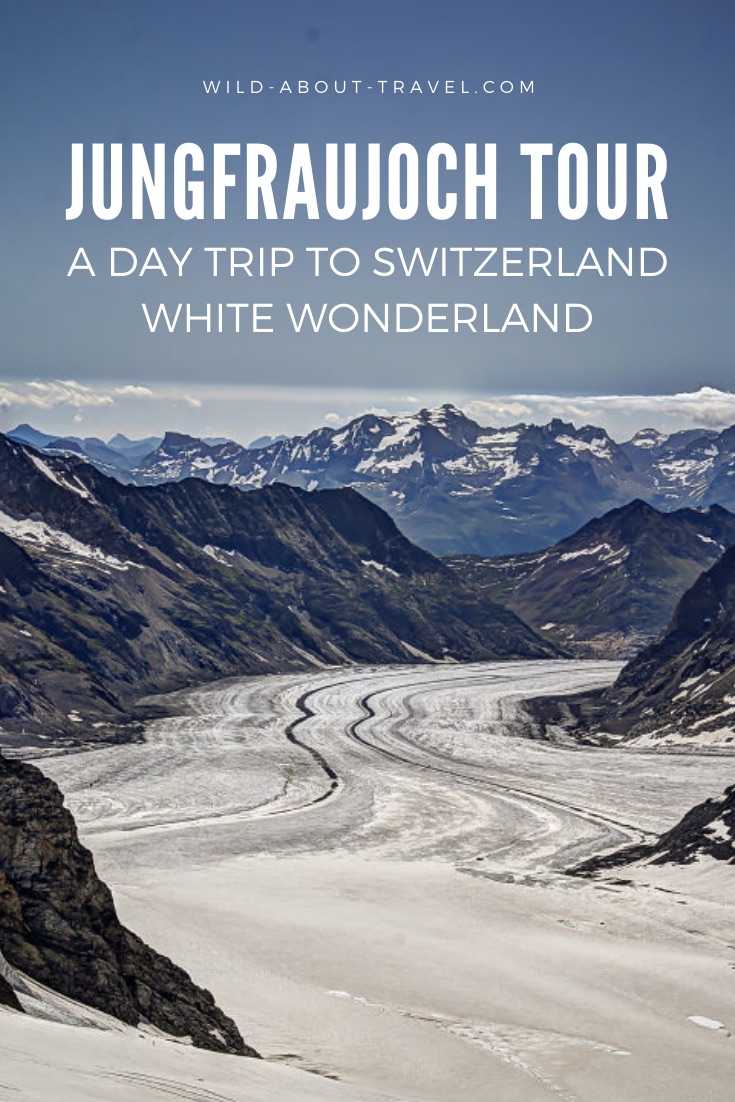
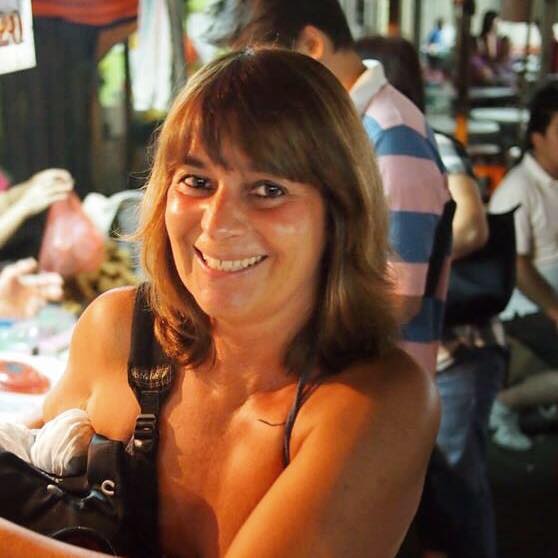

Lovely pictures! How can I follow your blog? I’m going to the Swiss Alps in July but have wondered about going to Jungfraujoch. I feel like the experience of a place is diluted when a place is overly commercialized to appeal to tourists. Should I skip Jungfraujoch or do you recommend going?
Looks like a spectacular day and one I would have enjoyed just as much as you.Wonderful photos too.
Simon, I spent half a day on the Jungfrau 25 yaes ago. What a great experience! Thank you for this post. Pics are wonderful!
SO glad you liked the photos, Silvia. And yes, the Jungfraujoch is breathtaking!
What stunning mountain scenery – I can’t wait to get back to the mountains in September – hope the sky will be as blue as this
I think you would love the Jungfrau Region, Heather. And there are plenty of beautiful hikes with amazing views on the mountains and the glaciers. Sure… A perfect weather as I was so lucky to get helps a lot 🙂
Wow! What a train ride! And striking mountain pics too!
A beautiful train ride, yes, with amazing views. And there are more in the area, on which I’ll write soon!
Wow… Mind-blowing scenery! I’m pretty sure that observatory was used in a James Bond film at some point.
I think you’re right, Steven, and that the scenes of a James Bond movie (no idea which one, however) were filmed here. The scenery is really one of the most beautiful in Europe.
Glaciers are so beautiful. Such a shame so many of them are shrinking so quickly. We had a fantastic time glacier trekking in Iceland and I’d love to do some more glacier trekking here on mainland Europe’s glaciers.
Iceland… One of the destinations I most dream of… You’re right, it’s a pity to see how glaciers are shrinking. Luckily, they’re still wonderful and one of my favorite landscapes.